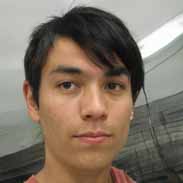Bones Of The Skull Flashcards, test questions and answers
Discover flashcards, test exam answers, and assignments to help you learn more about Bones Of The Skull and other subjects. Don’t miss the chance to use them for more effective college education. Use our database of questions and answers on Bones Of The Skull and get quick solutions for your test.
What is Bones Of The Skull?
The skull is a collection of bones that form the head and face of a human or animal. It contains a number of important features, including the brain, eyes, ears, nose and mouth. It also provides protection for these organs. The skull consists of several major bones: the frontal bone (forehead), two parietal bones (sides of the cranium), temporal bones (sides and base of the skull), occipital bone (back of the head), sphenoid bone (behind the nose) and ethmoid bone (roof between eyes). It also includes facial bones such as maxillae (upper jawbone) zygoma (cheekbones) mandible (lower jawbone), nasal bone and lacrimal bones.The frontal bone forms most of the forehead as well as part of both sides and top of the cranium. The two parietal bones are located on either side in front to back direction, just behind each temple area on either side. These two are connected by a suture in an adult human’s skull called coronal suture; this line runs across top center from one ear to another ear just above eyes. Temporal Bones run from sides to base on both sides where it meets with occipital at back end near neck area forming squamosal suture or lambdoidal suture in an adult human’s skull. The sphenoid is located behind nose between maxillae/zygomatic arches located below brain inside cranium near base. The ethmoid has many small delicate perforated plates which can be found between orbits/eye sockets forming part of orbitals & nasal cavity walls along with other sinus cavities formed within it. The facial skeleton is made up primarily by fourteen irregularly shaped facial bones, some including: maxilla & mandible which are one piece each forming upper & lower jawbones respectively, zygomatic arches commonly known as cheekbones which form eye socket frames & support muscles related to chewing food & speaking; lacrimal is tear duct structure; nasal is bridge connecting nostrils together; palatine forms roof/floor/walls inside mouth cavity along with other smaller facial structures such as vomeronasal organ etc.. All these aforementioned structures form skeletal foundation for body parts like teeth, tongue, sensory organs etcand help us perform necessary functions like eating, speaking














